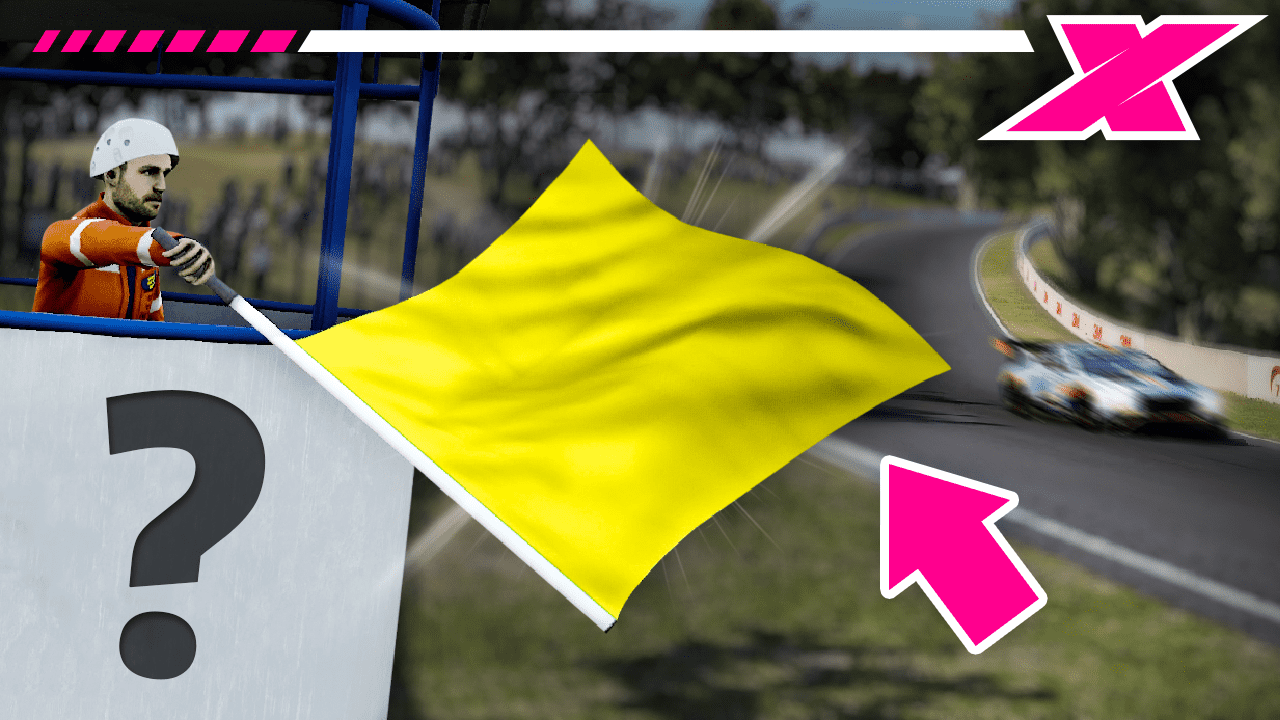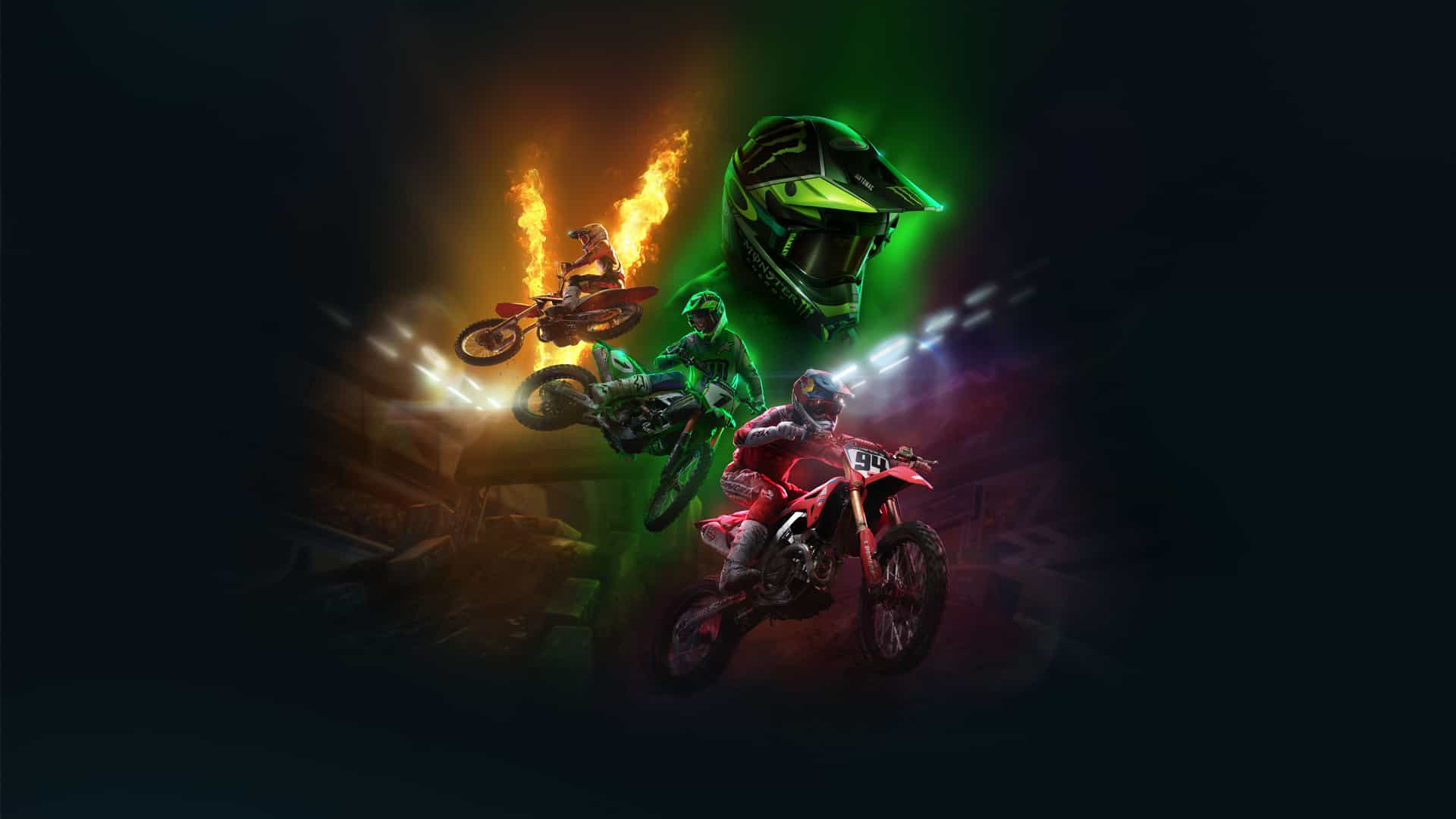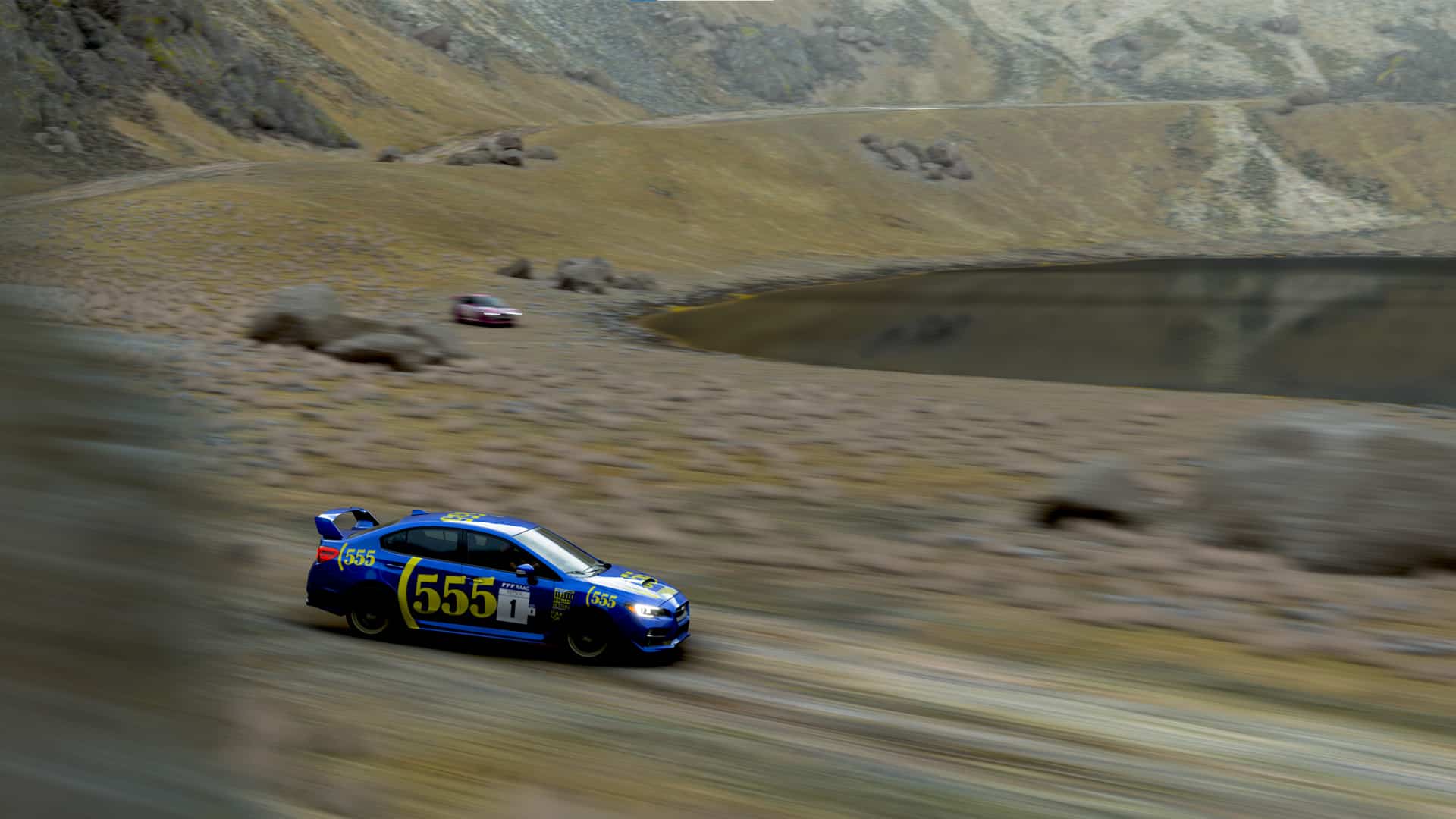Safety is the number one priority when it comes to real-world racing. They could not exist without the help of marshals, as they’re able to clearly communicate about the upcoming circuit conditions with different coloured flags. With a whole multitude of colours available to them, it’s very easy to get confused about their representation within a race if you’re a newcomer to motorsport.
When it comes to sim racing, however, flags are clearly displayed on-screen, with your spotter directing you of their instruction. We’re going to break down every individual flag that may pop up in sim racing, and explain how they indicate communication to every driver on the track.
Green Flag
Starting out with the first flag you’ll most likely see on the circuit, the green flag. This can represent the start of the race in both rolling and standing starts or can be used immediately after a yellow flag to say the track is clear to race on. Basically, green resembles go, just like a traffic light.
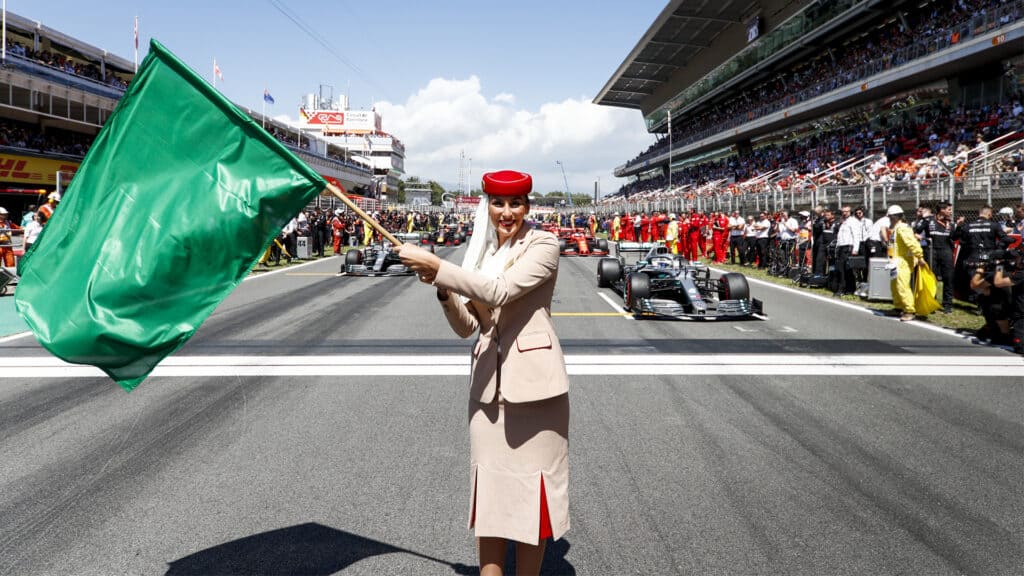
Yellow Flag
The Yellow flag is featured in a whole lot of different games and racing series, and just like a traffic light, its representation is about upcoming danger on the track. This flag can be used for hazards such as cars, debris, dangerous weather and so on. If this flag is displayed on your screen, it is highly recommended to slow down and keep an eye out for any hazards on the road, otherwise, your race might prematurely end. In Formula One, the driver is expected to slow down and maintain caution within a yellow flagged section to make everything safer. This is also the Caution flag in NASCAR, where the field slows down to the pace car speed once it’s thrown out.
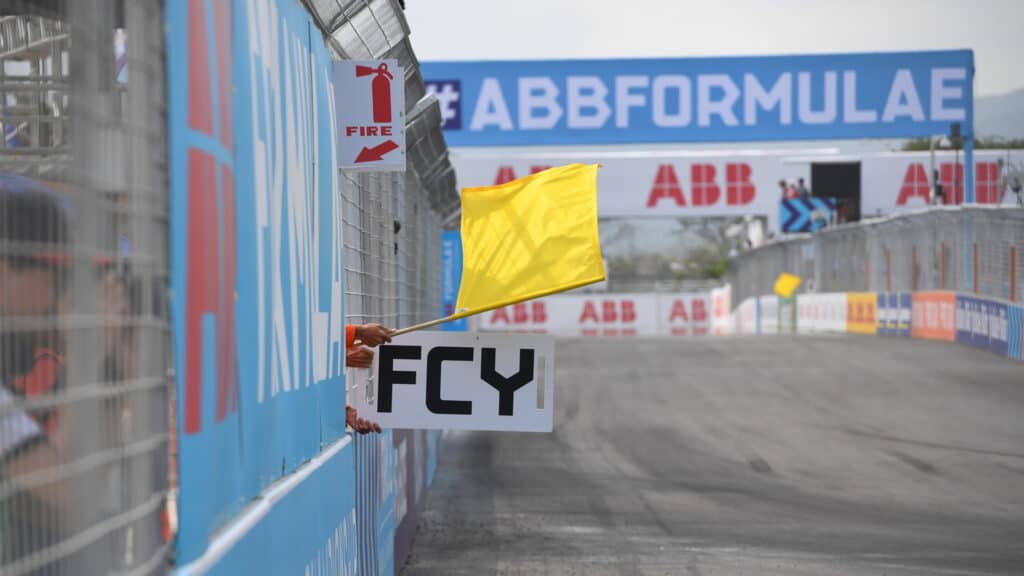
Double Yellow Flags
Double yellow flags indicate a much slower and safer speed is required by the driver, as a significant hazard is present on the track. This can be debris, marshals or other vehicles on the circuit that present a danger to the drivers, and must be taken with greater care. They might be a rare sight in sim-racing, but they can still be present if required.
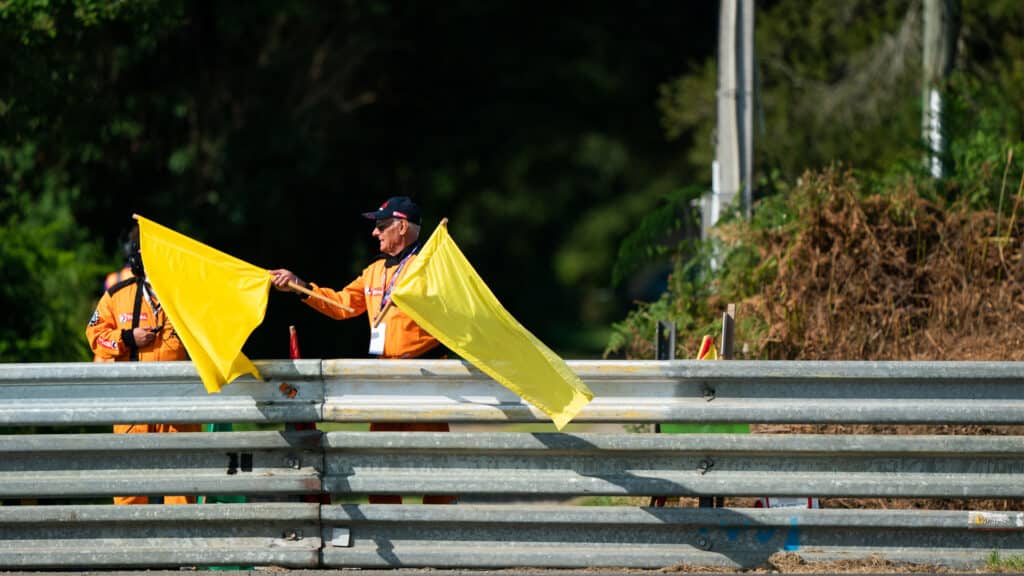
Red Flag
A rare sight in sim-racing, the red flag resembles a full stop to the session, where all cars on the field must return to the pits immediately, or the circuit is closed until further notice if a session has yet to start. This can be down to an accident occurring that requires significant attention, extensive damage to the track or unsuitable weather conditions. Considering sim-racing won’t tend to be affected by these hazards, this flag can also be used to signify an unsuitable server for league racing that would require a restart.
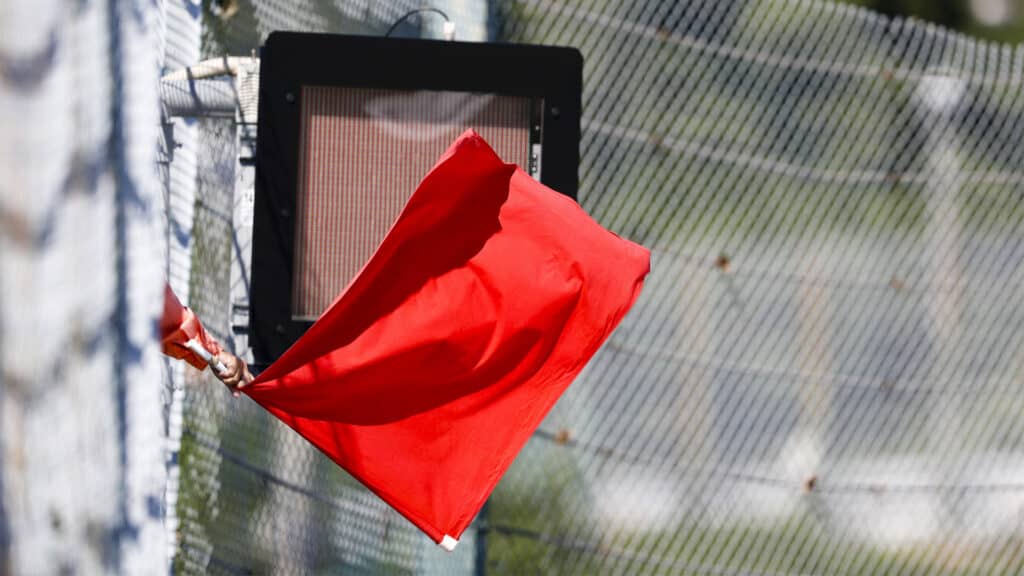
Red and Yellow Striped Flag
The red and yellow striped flag warns the field about a slippery surface on track, either down to weather conditions or vehicle fluids such as oil. Take caution when seeing this flag, as one wrong move can spell an end to your race.
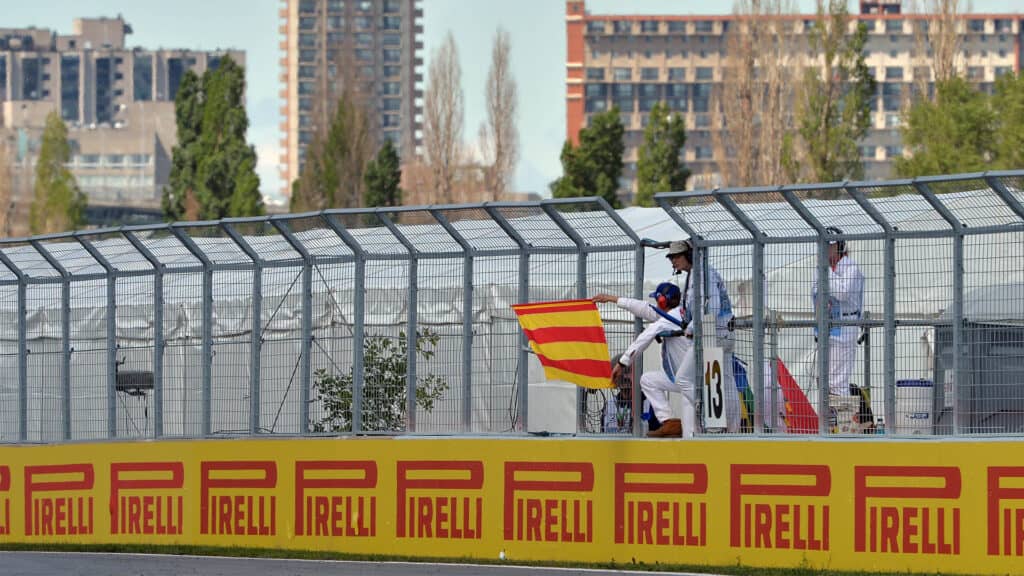
SC Board
A yellow flag with a white SC board is used within the most recent Formula One games. SC is an abbreviation of Safety Car, meaning the field has to slow down and follow the safety car. This is usually brought out for safety reasons within a race and leaves the track until racing is safe to resume.
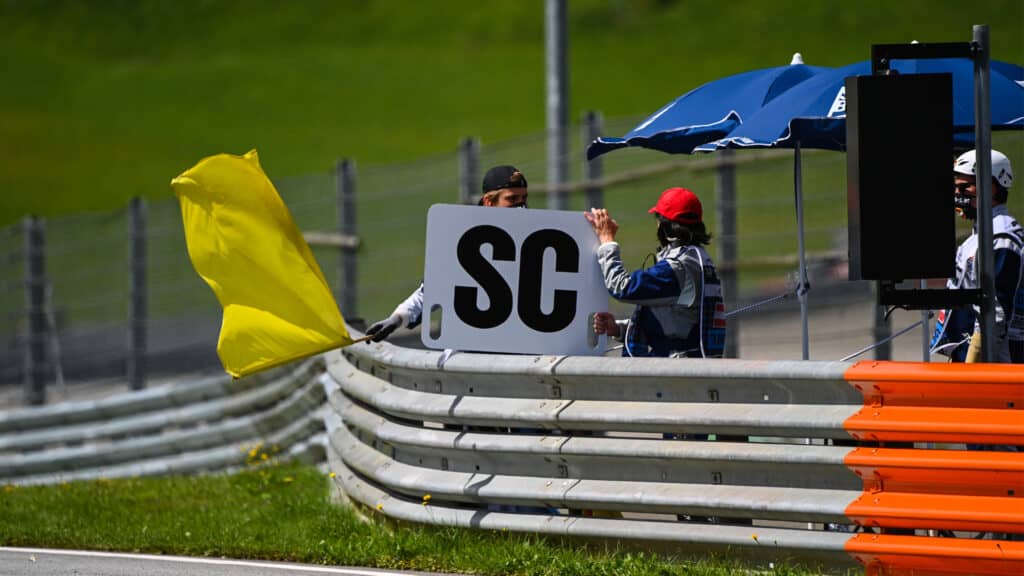
VSC Board
The Virtual Safety Car, abbreviated to VSC, is exactly the same thing as a normal Safety Car, but excluding the use of a physical car on the field. Every car on the circuit is required to match a certain speed according to the pit speed limit, and has to maintain that until the VSC period has ended. This flag, board or display can be displayed due to a hazard on track that can be quickly removed, that also requires the entire field to slow down to a safe speed.
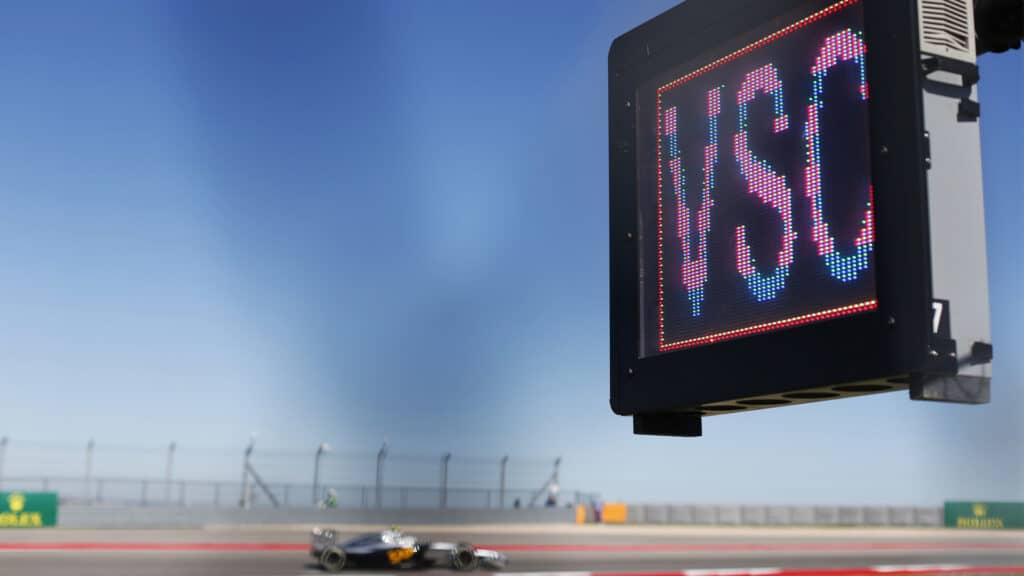
Blue Flag
The blue flag is predominantly used in Formula One, which is shown to inform a backmarker about being lapped by an upcoming car. The backmarker should let the upcoming car pass in a safe manner within the next few corners, as ignoring the flag can result in a penalty. Not every racing series follows the same rules with this flag, however.
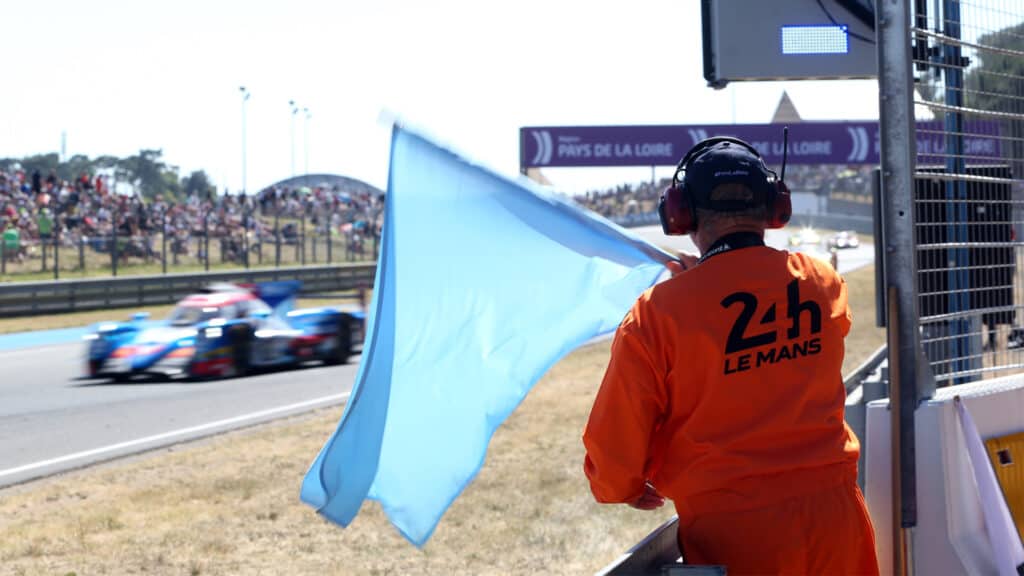
Blue and Yellow Striped Flag
As for the blue flag with a yellow stripe, the same rules apply to the backmarker, but they are not required to make way for the upcoming car. In multiclass for example, the slower class car does not have to drive off the racing line to make way for the faster class, nor will they become penalized for not giving way.

Black Flag
You do not ever want to see a black flag pop up on your screen, as it means you’ve made a crucial error that requires a guilty drive back to the pits. Whether that’s racking up too many incident points within a race on iRacing, or ignoring a drive-through penalty in F1 2021, a black flag generally spells the end of your race due to a disqualification depending on the series.
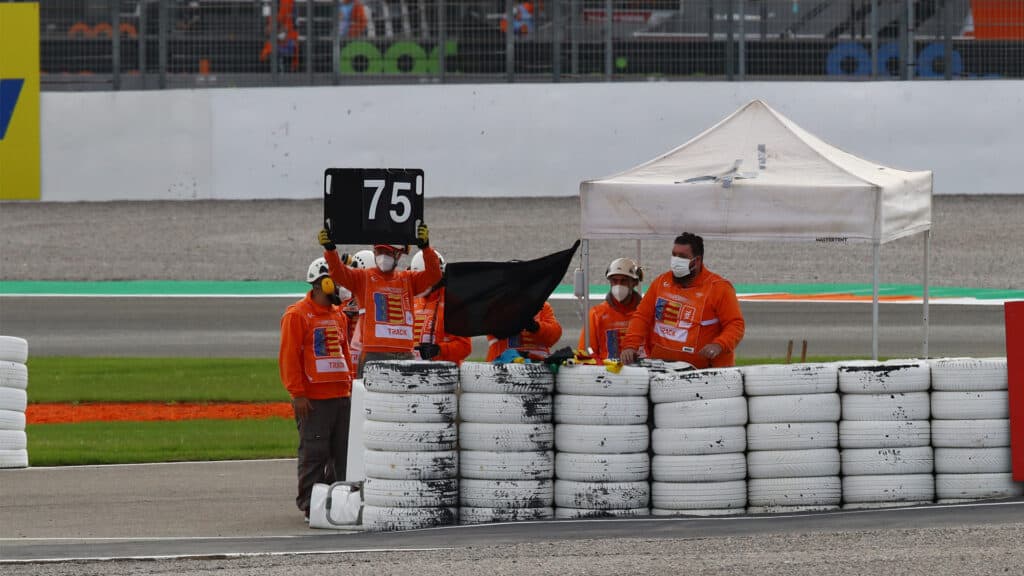
Black and White diagonal Flag
Leading to the aforementioned unfortunate flag, the black and white flag indicates the driver about unsportsmanlike conduct within a race. This could be due to blocking, corner-cutting or contact, which can lead to a time penalty.
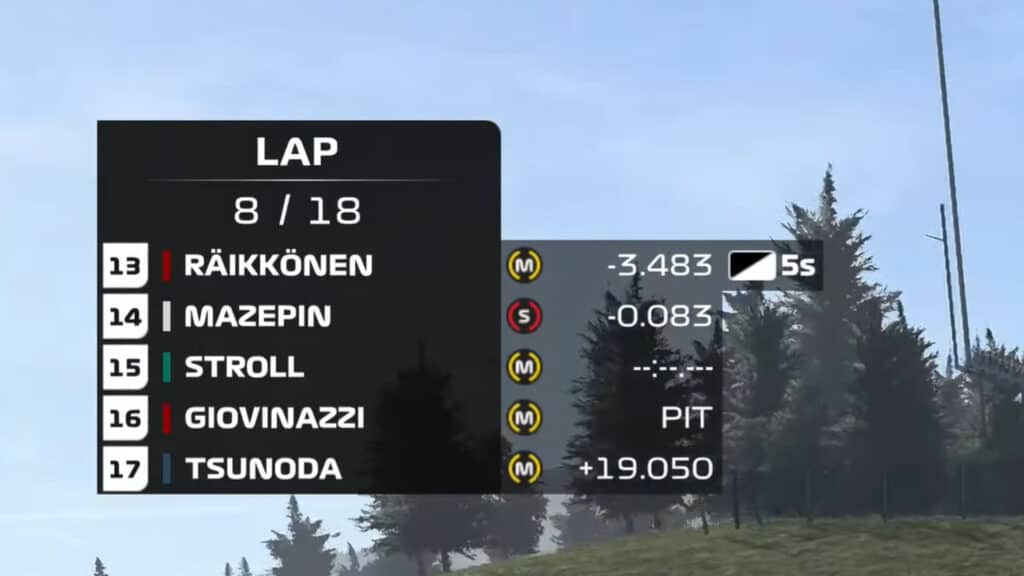
Black with Orange circle Flag
The meatball flag, otherwise known as a black flag with an orange circle, signifies that your car has taken too much damage, and must return to the pits as soon as possible. If this flag is ignored, it can lead to a disqualification, as the car can present a danger to other drivers on track.
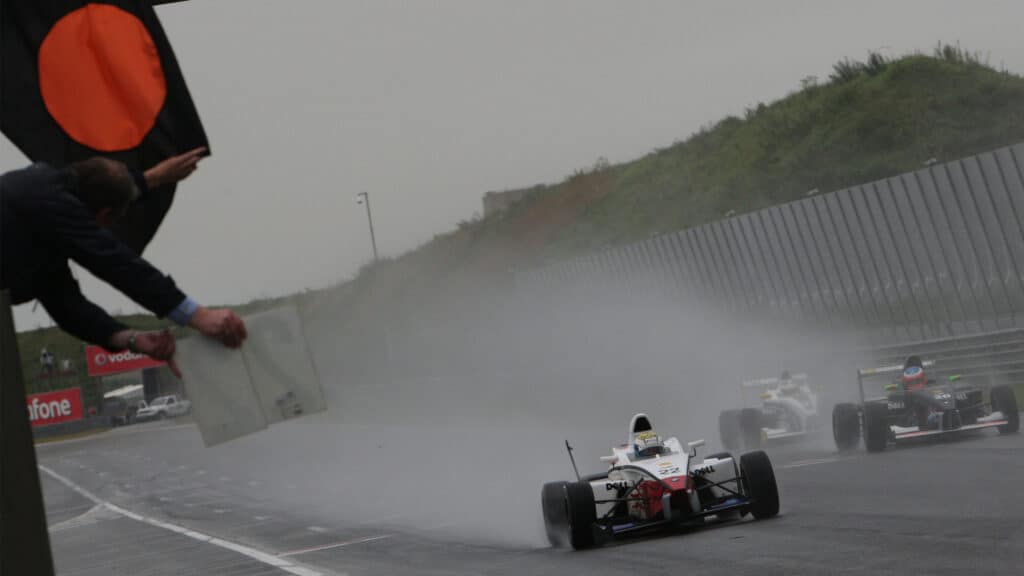
Black with White cross Flag
So you’ve ignored the plain black flag? Great! Meet their friend, the black flag with a white cross. Say goodbye to your race, and potentially any other races in the future. Seeing this spells disqualification, as you have made a severely critical error on the track. Time to drive back to the pits and explain yourself, as you have a lot of talking to do.
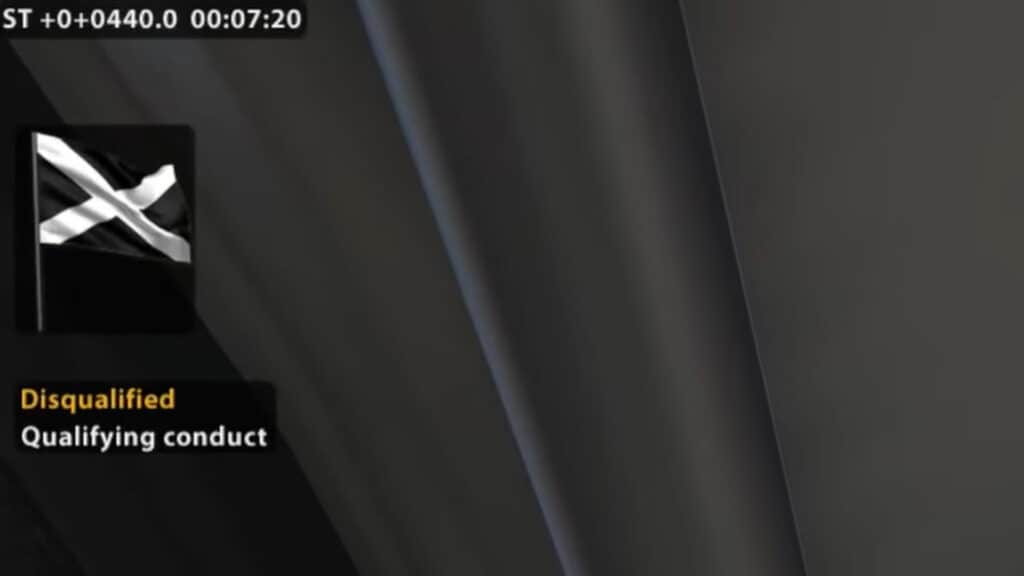
White Flag
No, this doesn’t mean the stewards have surrendered the track due to your driving capabilities. The white flag indicates the final lap of the race. The field has to drive one more lap around the track to reach the end of the race, leading up to;
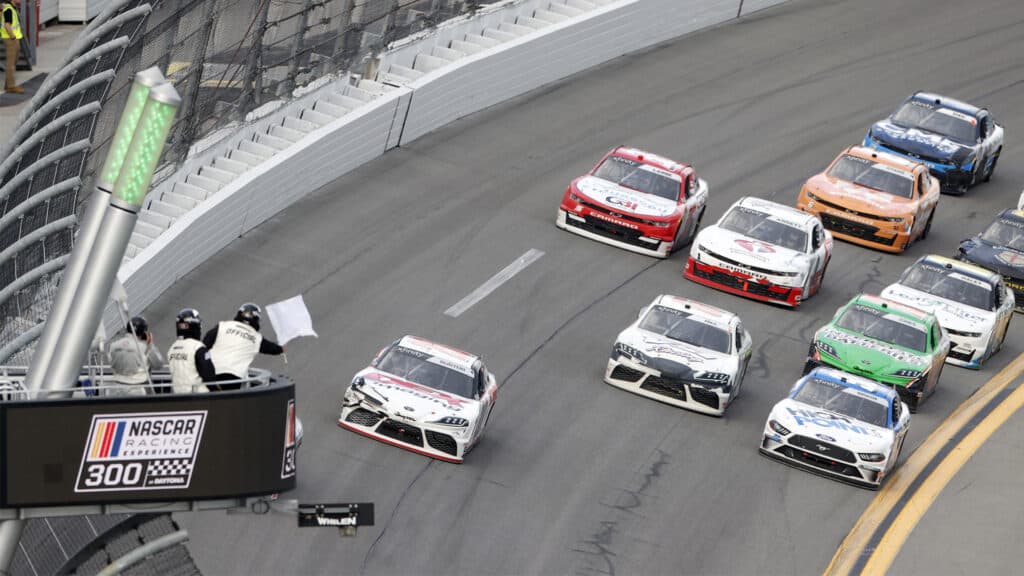
Chequered Flag
Seeing the black and white chequered flag is the final flag you will see. All the hard work you’ve put into the race has finally come to a stop. Have you finished well, or did it end in complete disaster?
Either way, the race had to finish at some point, and this is what the flag represents. Now get back to the pits and pop open a bottle of champagne to celebrate your victory, or pop open a six-pack of beer to try and forget about the disastrous result.
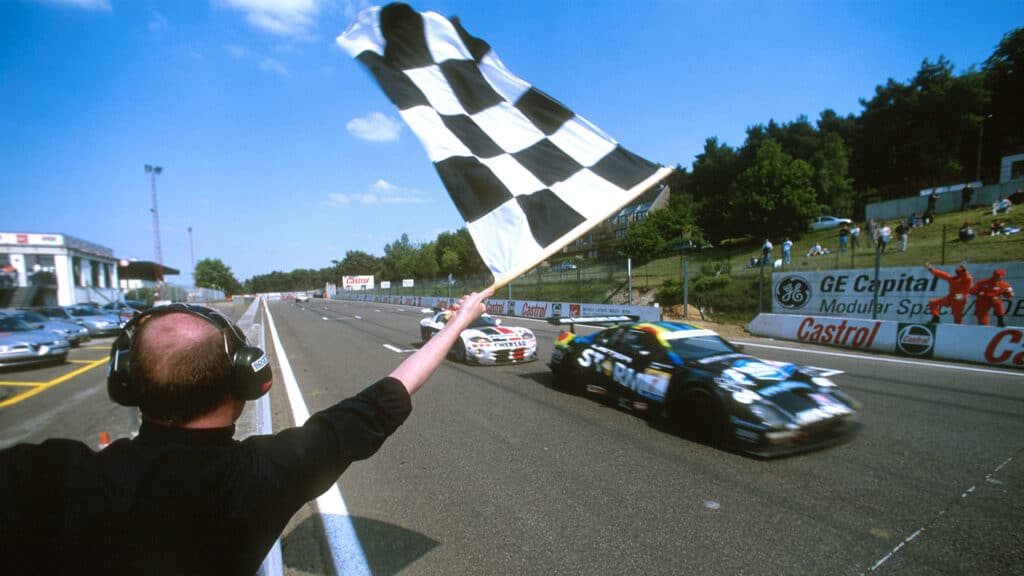
So that’s your lot. Hopefully, this article has helped you out, but if you’re struggling to remember these while you’re in a race, try to imagine them as a traffic light. Red is stop, yellow is be prepared to stop, and green is go.
Let us know down in the comments section below if there are any we’ve missed out, or if you have any questions about any flags you’ve seen in real racing.
Images: Motorsport Images
















